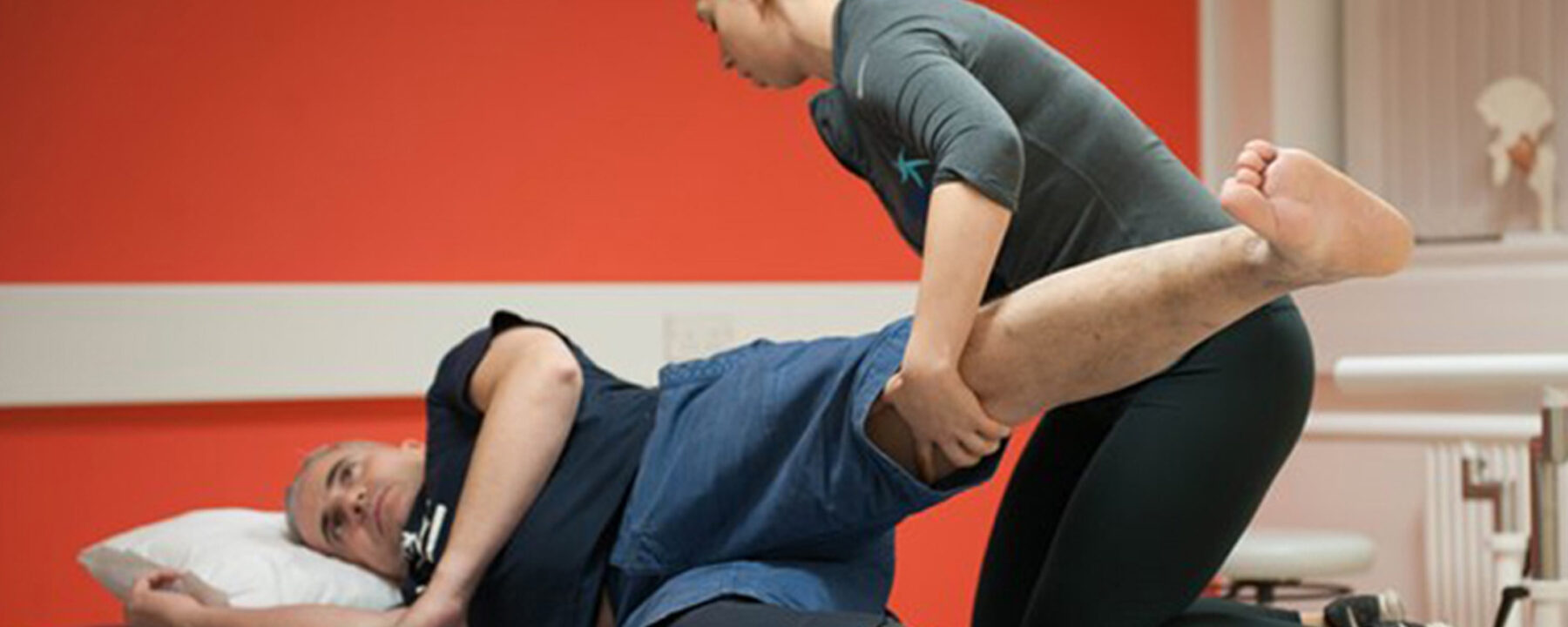
Physio Facts - Manual Therapy
Manual Therapy
Next up for the Residential Rehabilitation spotlight is manual therapy. So this is way more work for me than it will be for you! During the initial assessment the Physiotherapist (AKA me) will move all your joints around and note the range available and how tight your muscles are. Then throughout the week we will spend 30mins to an hour a day trying to get everything nice and loose and moving again.
Basically you get to lie on the plinth while we move your joints around, stretch your muscles and generally give you a body MOT. One of the most common areas that needs improving is hip mobility. Amputees often lack hip extension and internal rotation.
One way you can test this on yourself is to lie on your back and hug one leg towards your chest, if the opposite thigh lifts off the bed then you know those muscles are tight. The hip flexors run from your pelvis down to your thigh bone and are responsible for lifting the knee up. If you’ve been sat down a lot or even lay down a lot these muscles get tight and you lose the ability to move your leg back behind you. Hip extension is really important when using a prosthetic leg so that you can get a good knee bend and swing phase during walking.
Hip internal rotation is slightly harder for you to test at home but if you were sat with your legs dangling over the edge of a chair or bed and try to move your foot and shin out to the side, a bit like a windscreen wiper, this is internal rotation at the hip. In the clinic we would start to correct this by using a method called movement with mobilisation. You lie on your back while I hold your hip and knee in a 90 degree position. We then attach what looks like a seat belt around your thigh and around me. When I move your leg into internal rotation I gently pull on the belt to open up the joint space in the hip and allow for more movement. Once we have more movement with various techniques we then would want to strengthen the muscles surrounding the hip to make sure everything stays in place and works effectively.
Another common area for manual therapy is the spine. Usually you get back pain either because you’re moving a portion of the back too much, a section of the spine is too stiff or you don’t have enough strength in the muscles to stabilise the spine during movement. In the case of stiffness then we can help with manual therapy: we find the stiff portion, usually with you on your front or side and gently move it in the way we want it to until it becomes softer and more mobile. Think of it like a tiny much gentler CPR for the vertebra in your spine!
Manual therapy also consists of soft tissue work, essentially working on the muscles. We all think of massage as relaxing and peaceful; I’m sorry in advance but a Physio massage that isn’t for the sole purpose of relaxing a muscle is usually a bit on the unpleasant side. We prod, poke and massage with bony hands and elbows, and though a little unpleasant usually the resulting increase in range through the muscle and ability to move well is worth putting up with the discomfort! Don’t worry it’s not as bad as it sounds; sometimes it’s even pretty nice!
In summary manual therapy is anything where we get our hands on your body to help improve your joints and muscles and movement, it’s also a nice break from all the walking practice and exercises that we’ll talk about next time!
Please email Beth with any questions you may have - bethl@dorset-ortho.com
